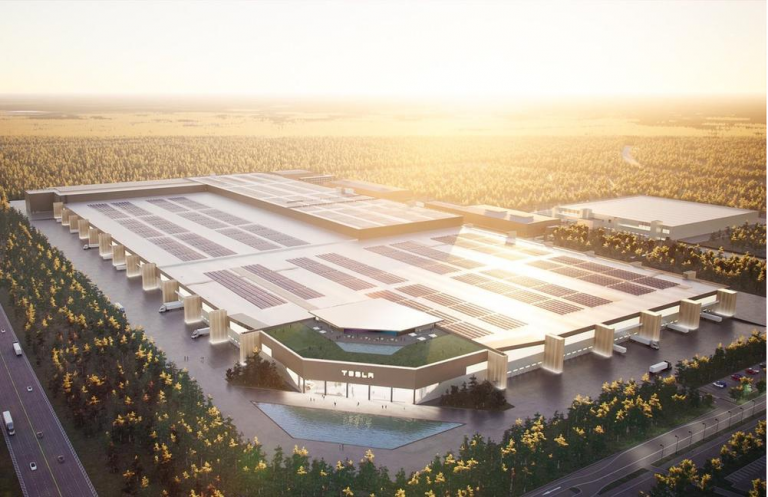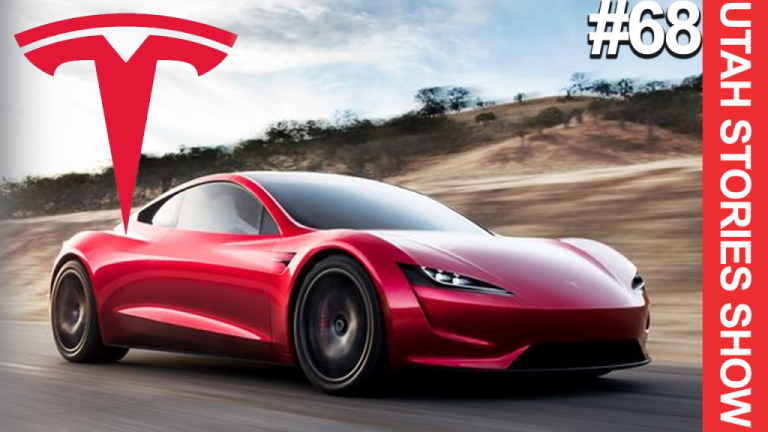Green energy
It’s become a topic of political contention because everyone especially on the right is fearful of how we are going to pay for it and how it might be a trojan horse to usher in socialism or fascism.
WATCH THE VIDEO:
LISTEN TO THE PODCAST:
The far left believes that if we don’t embrace green energy now, we will destroy our planet due to climate change. The right believes that the risk of destroying our economy in hopes of mitigating the effects of climate change makes no sense because there is no conclusive evidence if we lower carbon emissions even significantly that that will make a significant impact on climate change.
Who is right? Well first of all it doesn’t really matter because there have never been significant changes in consumer behavior due to government mandates. If you want to open up a black market for products then ban those products. Certainly, gasoline cannot be banned, nor can the burning of fossil fuels by government mandate. Why did whale oil become obsolete? Why did the burning of coal in homes become obsolete? Why were horses and carriages abandoned? Because cleaner better methods came about that consumers embraced.
The free market along with Innovation causing prices to decline has always been what has changed the world for the better. And this will be true as we head toward electric vehicles and renewable energy.
Tesla’s Impact on The Green Energy Movement and “Sustainable Energy”
There is an interesting way to examine this topic, and it’s by looking at one company whose stated mission is:to accelerate the world’s transition to sustainable energy. This company is Tesla.
But let’s examine the word “sustainable” for a moment. Let’s call this the word of the day.
Lithium-ion batteries are not produced “sustainably ” I’ll illustrate this point by examining the mining operations. Living here in Utah, where we have such an abundance of natural resources, I’ve already done quite a bit of digging into mining companies.
So let’s Examine how Lithium, Nickel, and Cobalt are mined; the main ingredients that make the batteries. None of these materials are obtained in a “sustainable” manner.
Bloomberg published a report detailing how the boom in lithium mining is irreversibly destroying the local environment of northern Chile’s Atacama desert. Mining for lithium means removing large amounts of water, which means depleting the water supply for locals.
Nickel also has issues in the way it’s mined. Three of the top five companies that mine nickel have human rights violations. There are slaves mining nickel in places like New Guinea, where locals are living in extreme poverty while massive multinational corporations are getting wealthy while destroying the local environment.
Cobalt is the last major ingredient in producing Lithium-ion batteries. And according to the Guardian: children as young as seven are mining cobalt in Africa. According to the same article, there are 40,000 children working in the mines in the Democratic Republic of Congo.
Cobalt, Nickel, and Lithium are also key ingredients of course in all of our consumer electronic devices.
So when political leaders say they want to transition to “Sustainable environmental practices.” What we are seeing is that this is just a buzzword to make consumers feel good. And in no manner could we proclaim that if everyone switched to electric vehicles today the world would suddenly become a much more “sustainable” place because if we multiply the operations and the supply chains of how these ingredients are produced, the environment might in fact worse off, not better.
No, we as consumers want EVs because they are quiet, fast, and can run without gasoline. Let’s be honest. And in terms of the environment, they could dramatically improve our air quality even if it is at the expense of the ingredients they require from impoverished nations. So back to Tesla.
Will Tesla’s Stock Continue to Soar?
Tesla’s market cap has skyrocketed in recent months. Can they maintain this momentum? Can Tesla stave off the competition from the big boys: which include China and the world’s largest automakers such as GM, Ford, Volkswagen, and Toyota?
How much better is Tesla’s technology? Are their batteries and vehicles really so much better than everyone else’s? It’s very difficult to know for certain. We don’t have a look inside of automaker’s R&D departments. But we can understand the lead that they have with just how much they have invested in the technology.
Elon Musk revealed Tesla’s most recent innovations at an event he called “Battery Day”. There he shared with investors and consumers that Tesla already had in production batteries that were far more efficient and far smaller for the amount of power they could contain.
Many are calling it a watershed moment because Musk announced that in three years Tesla will be able to offer a vehicle for $25K, due to their announcement that they now have a battery that is already in production that will be 6 times more powerful than present-day batteries, store 5 times more energy, and increase driving range by 16 percent. This is in fact huge. A battery that can store 5 times the energy means that one-fifth of the amount of space is required to store the same amount of energy that is in the batteries currently in Tesla’s vehicles. This will also make a significant difference once these batteries are being used to store energy for residential use.
A $25K Tesla?
Since the batteries for electric vehicles currently are 40% of the entire cost, this would make batteries and eventually Tesla vehicles far less expensive than ever before. Musk says that by 2022, consumers will be able to buy Teslas for $25,000.
This is some really amazing news. And if we examine what Tesla has done in terms of production growth, vehicle sales, and profitability it’s really beginning to look like Tesla is on track to become a dominant force in the auto market. Their growth in just the past few years has truly been remarkable.
A Comparison Between GM and Tesla
Let’s just compare Tesla with GM for a moment. Three years ago Tesla was making 100,000 vehicles per year and GM was making nearly 10 million vehicles per year.
That was three years ago. This year Tesla will make one million vehicles and GM will make 7 million vehicles. And GM announced they will be closing many plants and laying off many more workers and they are investing heavily now into making electric cars.
Tesla by comparison says they will be building four new factories in the next two years to add to their four current factories.
Tesla’s Investments
Inverse.com reports that Tesla currently has three factories with Giga in the name
- Giga Nevada, previously known as the “Gigafactory.” This facility came after the Tesla factory in Fremont, California that once belonged to General Motors. Giga Nevada started producing batteries in January 2017.
- Giga New York. This facility, located in Buffalo, started producing Solar Roof tiles in August 2017.
- Giga Shanghai. This facility started producing Tesla Model 3 vehicles in January 2020. It’s expected to produce 500,000 Model 3 and Model Y vehicles per year when it reaches full capacity
These are in addition to their assembly factory in Fremont, California (which they bought from GM).
As I said Tesla is planning four more factories, one more massive factory in the U.S. one in Berlin that broke ground in 2019, they are expanding their Giga Shanghai factory and they are building a Giga UK, and building a second factory in Asia.

So, what does this all mean?
I believe what we are witnessing is a company that is actually living up to the hype. Musk has done an incredible job at building amazing vehicles that consumers want to buy. The Chinese government has put a fortune into EVs and they are making some impressive vehicles — Shenzhen (one of China’s largest cities) has gone all-electric. It’s now a quiet city. But even the Chinese like the Tesla brand more than their brands.
I find it interesting that Warren Buffet is investing some of his massive piles of cash into Chinese electric automakers. China wants to be at the forefront of the EV revolution and sell its cars worldwide. But while they have made inroads in selling their electric buses to some cities in Europe, it remains to be seen if world-wide consumers will cozy up to new Chinese brands at all the same way that consumers love their car brands that Japan has been producing for years.
Chinese automakers and brands coming into the U.S. also might be a point of contention in the future in the U.S. and Europe especially considering how the Chinese government has handled Covid.
Now let’s take a moment to examine the larger market. The big question here is: Will the dozens of countries who are pushing green emissions and the elimination of internal combustion engines be able to do what their “super green political leaders” are attempting?
Now I find this part of the equation interesting. Because every political leader on the left wants to virtue signal by showing how incredibly environmentally friendly they are by making their goals for the elimination of fossil fuels more and more ambitious.
All Mayors outdo each other in Virtue Signaling in Utah
Locally, every mayor in Utah, who happens to be liberal says that they will completely eliminate all fossil fuels in their cities by 2035. Our Salt Lake Mayor said this as well as our County Mayor and of course the Mayor of Park City.
But is this realistic? What we witnessed in California this past summer is a clear example of what happens when political leaders try to put the cart in front of the horse when it comes to innovation in the name of helping the environment.
Californians suffered this past summer mainly due to their decision to be super ambitious going all-in to government mandates for converting as much of their power to wind and solar as possible.
California’s Green Energy Crisis
California declared a state-wide stage three emergency this past summer when their power grid was failing. Residents couldn’t cool their homes, there was a mandate that nobody set their thermostat below 78 degrees, because all of their “green energy” wasn’t working for not enough wind or sunlight. Five million customers were without power. They said this was driven by a massive heatwave. The wildfires’ terrible air quality made conditions even worse.
California is much farther along than Utah, they have 30 percent of their power coming from renewables, But as a Slate.com article recently pointed out, this transition isn’t as smooth as the advocates for green energy would hope.
This is an illustration of why the government cannot be the driver of this revolution. Instead, technology and innovation-driven by consumer demand must always be the drivers. In other words, allow capitalism to do it’s magic and we will continue to witness some amazing things happen in the coming years. Does this mean that we should never have additional fuel consumption and pollution taxes that go toward green initiatives? No, perhaps we should have them, especially here in Utah during times when we can’t breathe.
Countries Banning Fossil Fuels and Internal Combustion Engines
Still, there are governments all over the globe who are mandating that automakers go green or go home. The Netherlands is mandating that all cars sold by 2045 must be electric. In fact, there are nine countries now saying they will be banning the sale of internal combustion engines. They include Denmark, Norway, Italy, France, India, Ireland, and Israel. So is this actually realistic and practical?
The country in particular that has gone all-in with EVs is actually China. China’s state-owned Nio was given $1.4 billion by the Chinese government. But still these Nio cars aren’t cheap, costing between $40-$70K. Most Chinese consumers who can afford to buy a Tesla prefer the American brand over the Chinese electric car brands. This is why Tesla’s gigafactory in Shanghai keeps expanding. They can’t build cars fast enough to meet the Chinese demand.
But still. 2/3rds of China’s electricity is derived from coal.
There are 400 million vehicles on the roads in China. China’s goals are to reduce reliance on foreign countries for gasoline and reduce air pollution. But they can’t do this unless they make massive changes to their energy infrastructure. So the Chinese government is conducting an experiment in one city.
Shenzhen: A Model for MegaCities
Shenzhen has converted all of its buses to completely electric. Almost all cabs in Shenzhen are electric (12,000 total). But the taxi cab drivers all need to take a 2-3 hour break in the middle of the day and recharge. Still, they are significantly improving their air quality there thanks to EVs. And it’s been called, “The first Quieter Megacity” thanks to Evs.
So despite the most populated country in the world making a huge push to change to EVs, as long as they are burning coal to produce electricity, they aren’t really making much of a dent in overall CO2 emissions. And they still have a very long way to go.
So the bigger question: Can any of these countries generate enough electricity to charge all of their vehicles on the roads? Won’t this take an enormous amount of additional energy to take essentially all vehicles off gasoline and get them onto electricity?
This is a big question that is very difficult to answer because most of the information and studies out there are conducted by electric car makers. But lets still look at a few:
Eon the electric car maker says no problem. The energy will come from You. They are counting on you and I to buy solar panels. But what about when it’s cloudy and the wind isn’t blowing? Countries like the UK have gone to more than half green energy. But they are relying on consumers installing solar panels and they are relying on off-shore wind farms.
So, yes. There is a problem with the infrastructure of these countries. Another group did another big study called Transport and the Environment to see what would happen when people convert to EVs. They found that as long as they implement “smart charging” and they produce far more methods for storing electricity in batteries recycled from cars, there shouldn’t be a problem. But “smart charging” essentially means that consumers charge at given times during the day when there isn’t high demand.
So what is the solution? If this movement is going to come to fruition soon, I believe a few very important things need to happen especially in Utah and the Western United States. First, far more homes need to convert to using solar power and storing electricity in large batteries.
Tesla is actually pushing this technology as well. They realize that there is no way their mission can accelerate the world’s transition to sustainable energy unless consumers change their homes over to solar. This is why Tesla’s solar roof (going for $32-$42K) and its solar panels (going for between $20K-$30K) and power walls (which run for around $25K) are now an integral part of the equation. But if I bought a Model 3 (their cheapest car, at around $40K), and the panels and the power wall I would be all in at about $85K. Are consumers even close to being willing to do this on a massive scale?
That seems to me to be the big question. If consumers aren’t willing to be in on a massive scale, are power companies and the government making these mandates willing to heavily subsidize solar on a much greater scale? I strongly don’t believe government subsidies are the answer. As I said earlier the technology should drive consumer demand not the artificial demand for subsidies.
Tesla also has very big plans to convert and recycle batteries that are being used in their vehicles for use in future power stations. In China, Tesla is already working with authorities to ensure that they have a recycling program that repurposes batteries to compete with traditional fossil fuel power companies.
So in conclusion, is Tesla really a company that should be valued at twice the price as the largest U.S. automaker GM when they build and sell less than one-third the number of vehicles?
I think it will all depend on how well they continue to do at building batteries and solar panels. If they continue to drive the cost down through their innovation, production capacity and the vast amount of brainpower they employ then Tesla could actually become the most valuable company in the world.
There is no doubt there are: a massive appetite and demand for EVs, but the technology, not subsidies, needs to drive the demand. Tesla now has $90 billion they have rightfully gained in market share to throw at solving the problem — I hope to see that they win. In the meantime, I hope to see that we change our ways and work with our local governments to improve our trails, bike paths, and sidewalks so we can get out of our cars to drastically reduce congestion and pollution, which is exactly what I’m going to be talking about in the next two segments of our green-energy and infrastructure series.
So now, about this series on EVs, infrastructure, and trails. It’s time that we start a conversation about how we can preserve our nature and environment as our cities and state continue to grow. With the massive influx of people coming to Utah right now, there is a lot that depends on us getting this right so we will be talking to experts about how we best accommodate growth. Subscribe to our newsletter to keep posted as we continue to examine these important issues.






